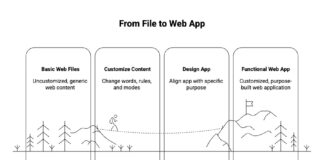🕒 3 min read
Across industries, executives pour billions into digital transformation programs, yet 70 to 95 percent fail to deliver the promised ROI. The culprit isn’t technology—it’s missing business logic: the architectural layer that aligns systems, processes, and strategy so innovation translates into measurable business outcomes.
The Digital Transformation Paradox
By 2026, global spending on digital transformation is projected to exceed $3.4 trillion. Yet research by AlixPartners and Dennis O’Higgins (2023) shows most initiatives underperform. The gap between vision and value stems not from poor tech, but from fractured strategy. Without a governing layer of business logic, new platforms merely replicate inefficiencies faster.
Three Root Causes of Failure
- Misalignment of Front and Back Systems — Sales, supply chain, and finance still operate in silos. Strategy isn’t cascaded into data models or workflows, leaving automation without context.
- Lack of Phased Metrics — Organizations measure spend, not outcomes. O’Higgins’ study found success requires a balanced scorecard of business alignment, efficiency, service delivery, and strategic outcomes.
- Weak Governance and Change Discipline — Leadership underestimates cultural friction; departments chase tools instead of re-engineering capabilities; few monitor whether digital initiatives reinforce the operating model.
What the Research Proves
Using a Partial Least Squares Structural Equation Model (PLS-SEM) across 129 companies, O’Higgins empirically confirmed four reinforcing relationships:
| Hypothesis | Correlation (β) | Impact |
|---|---|---|
| Business Alignment → Efficiency | 0.735 | Large effect (f² = 1.177) |
| Business Alignment → Service Delivery | 0.565 | Medium-large effect (f² = 0.434) |
| Efficiency → Service Delivery | 0.302 | Moderate effect |
| Service Delivery → Strategic Outcomes | 0.588 | Strong effect on competitive advantage |
In plain language: when an organization’s business logic aligns its strategy, processes, and IT decisions, efficiency improves—leading to stronger service delivery and measurable competitive gain.
Case in Point: Cloud Without Context
Imagine a manufacturer migrating to the cloud. They automate procurement and deploy dashboards—but never codify the logic connecting inventory policy to order velocity. The system “works,” yet KPIs stall because decisions remain manual. A business-logic-first approach maps decision rules (e.g., “if supplier lead time > 7 days, trigger dual-sourcing”) directly into the architecture, converting capability into business performance.
Building a Business-Logic-First Transformation Roadmap
- 1. Start with Outcomes, Not Platforms — Define measurable value drivers: revenue growth, cost reduction, cycle-time compression, customer satisfaction.
- 2. Model Decisions Before Code — Document decision flows using DMN or rule diagrams. Every automation must trace to a governed decision.
- 3. Align Architecture via the Balanced Scorecard — Map business alignment, efficiency, service delivery, and strategic outcomes across teams.
- 4. Establish Continuous Feedback Loops — Use metrics and retrospectives to re-tune logic as markets shift.
- 5. Institutionalize Business Architecture — Embed architects who translate strategy into technology and govern models, not just infrastructure.
Why Business Logic Matters
Business Logic bridges technology and leadership. It connects the data layer to the decision layer:
- Executives → a dashboard of business impact, not just IT uptime.
- Operations → standardized decision rules across functions.
- IT Leaders → spend justified in ROI terms that boards understand.
“By developing robust business architecture capabilities and fostering a culture that supports them, organizations can navigate the complex digital landscape and achieve sustainable transformation success.”
— Dennis O’Higgins (2023), Journal of Business and Management Studies









